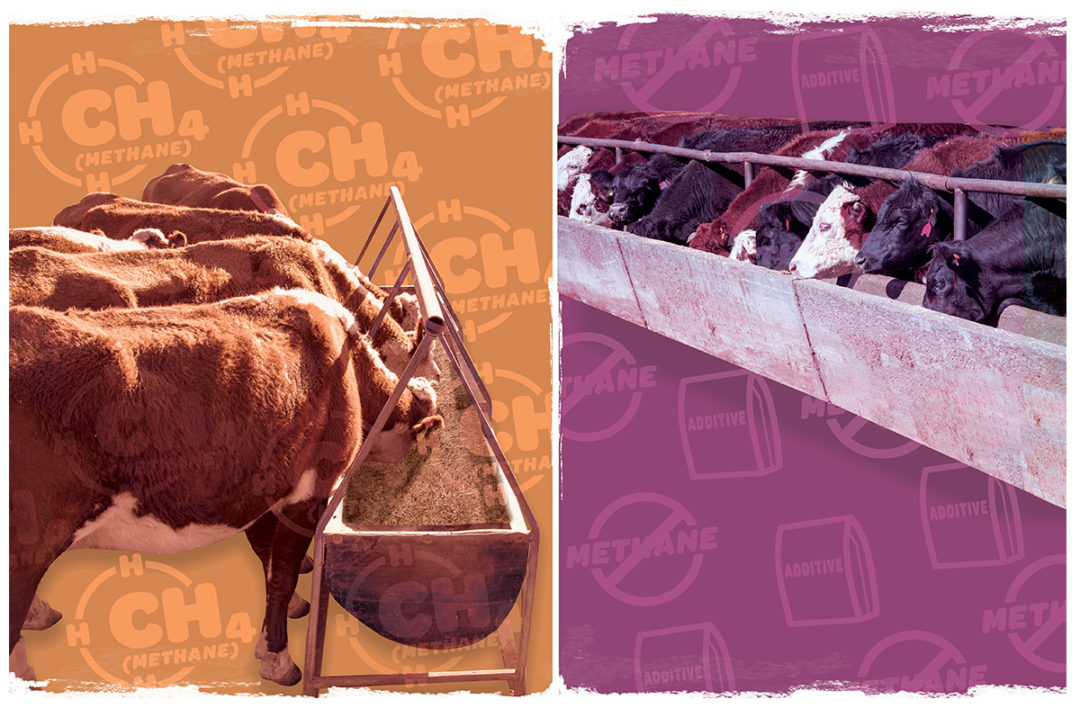The Innovative Feed Enhancement and Economic Development Act of 2023, better known as the Innovative FEED Act, will create options for producers to buy and use products that may not exist on the market today. These feed ingredients can help producers meet whatever goals they may have, from climate goals and soil health to feed efficiency and animal health.
What is it?
“A lot of people don't understand how feed ingredients get approved in the United States; I certainly did not when I started this job,” says Leah Wilkinson, vice president of public policy and education for the American Feed Industry Association (AFIA). “Feed ingredients fall under the Federal Food, Drug and Cosmetic Act, meaning they are regulated by the Food and Drug Administration, or FDA, as a food.”
Food, for man or animal, is regulated by the FDA, and all ingredients going into animal food need to be approved for safety to the animal consuming the product and for the humans consuming the resulting meat, milk, eggs or other animal product, Wilkinson says. The definition of food is that it needs to provide taste, nutrition or aroma, or it must be approved as an animal drug. Typically, an animal drug product treats, mitigates or prevents a disease or illness, she adds.
“The feed industry has been developing new technologies, becoming more aware of the role feed ingredients have in improving animal nutrition and to the well-being and resiliency of the animal, creating a healthier, more productive animal, among other things,” Wilkinson says.
The current policy was put in place in 1998 and deems any product wanting to make a production claim would be regulated as an animal drug.
While there have been discrepancies with the policy since it was first installed, it wasn’t until recently that it was brought back up. In 2020, the request was made to the FDA to modernize their regulatory thinking and give a pathway that could regulate these products which truly work within the digestive tract of the animal as feed ingredients, Wilkinson says.
“The products will still have to prove it is safe and that it works,” Wilkinson says. “When we go through a feed ingredient review, it just means it's regulated more appropriately for our industry versus being regulated as a drug. It would also speed up getting products to market and would make how they are marketed more appropriate after approval because there are post-market approval things that drugs have to do that feed ingredients don't and shouldn't have to do, saving time and money for the companies and producers.”
This bill is not only for products under development but for current products on the market that may have additional benefits they cannot currently claim. These products will not have to go through the entire safety review they've already gone through to be able to make the new claims, Wilkinson says.
“I raise grass-fed beef; the idea of treating burping cows is laughable to some,” says Russell Taylor, Live Earth Products Inc. vice president. “But there are products out there that impact odor emission from the manure and enteric gases, such as methane, from the production of animals.”
He adds that reducing emissions is a win for producers who are getting more energy into the animal through the feed that's fed instead of having to come off as a gas and for those environmental groups that want less greenhouse gas emissions.
“The United States is actually behind the curve a little bit on this because of our old laws,” Taylor says. “There are new technical products that are already allowed in other countries like Europe, South America and Asia.”
What will it do for producers?
There are technologies out there that can be advantageous to producers if they could have access to them, Wilkinson says.
“If we want to stay globally competitive, our regulatory system needs to also allow us to do that,” Wilkinson says. “We want to bring those technologies to our livestock industry, but we have to do it following the rules and regulations. That is why we're trying to forge this new pathway of regulatory ability for our industry. Right now, our companies are not going through the drug pathway. Therefore, our producers are not getting access to the technologies and we're falling behind the rest of the world, losing out on research and development.”
There are many possibilities for feed additives and what they can do for the animal, producer and industry. The most popular talked about right now is the methane reduction possibilities, but others include products to increase feed efficiency, reduce heat stress, reduce the instances of E. coli shedding and reduce nitrogen or phosphorus in manure, Wilkinson and Taylor both shared.
What do producers need to know?
“The language for this bill ended up getting put on the Senate version of the Animal Drug User Fee Reauthorization bill (ADUFA) as it passed committee; however, the amendment was stripped to produce a ‘clean’ ADUFA which passed on the continuing resolution to keep the government temporarily funded,” Wilkinson says. “We are now waiting to see if it will be included in another must-pass piece of legislation yet this year.”
It was put in ADUFA not because it has anything to do with that piece of legislation, but because it was the legislative vehicle that was moving – the “engine on the train” that was going through the committee of jurisdiction and the "little train car" got added on to that engine, Wilkinson says. The bill was too small to stand on its own, so it had to get added to something, she adds.
“The Innovative FEED Act is a mechanism that will help get some ingredients across the finish line so producers can achieve some of the climate goals consumers want to see,” Taylor says.
But it's more than just the environment, Wilkinson says.
“There's more that we can do especially for the cattle industry for food safety and to help them tackle some of those industry challenges that they faced for many years and have put a lot of research dollars in to help public health,” Wilkinson says. “We, as the feed industry, want to be able to do our part to help the industry meet the goals that they've set by providing nutritious, safe and high-quality feeds to make your animals grow faster, be more robust out in the pastures and healthy.”









